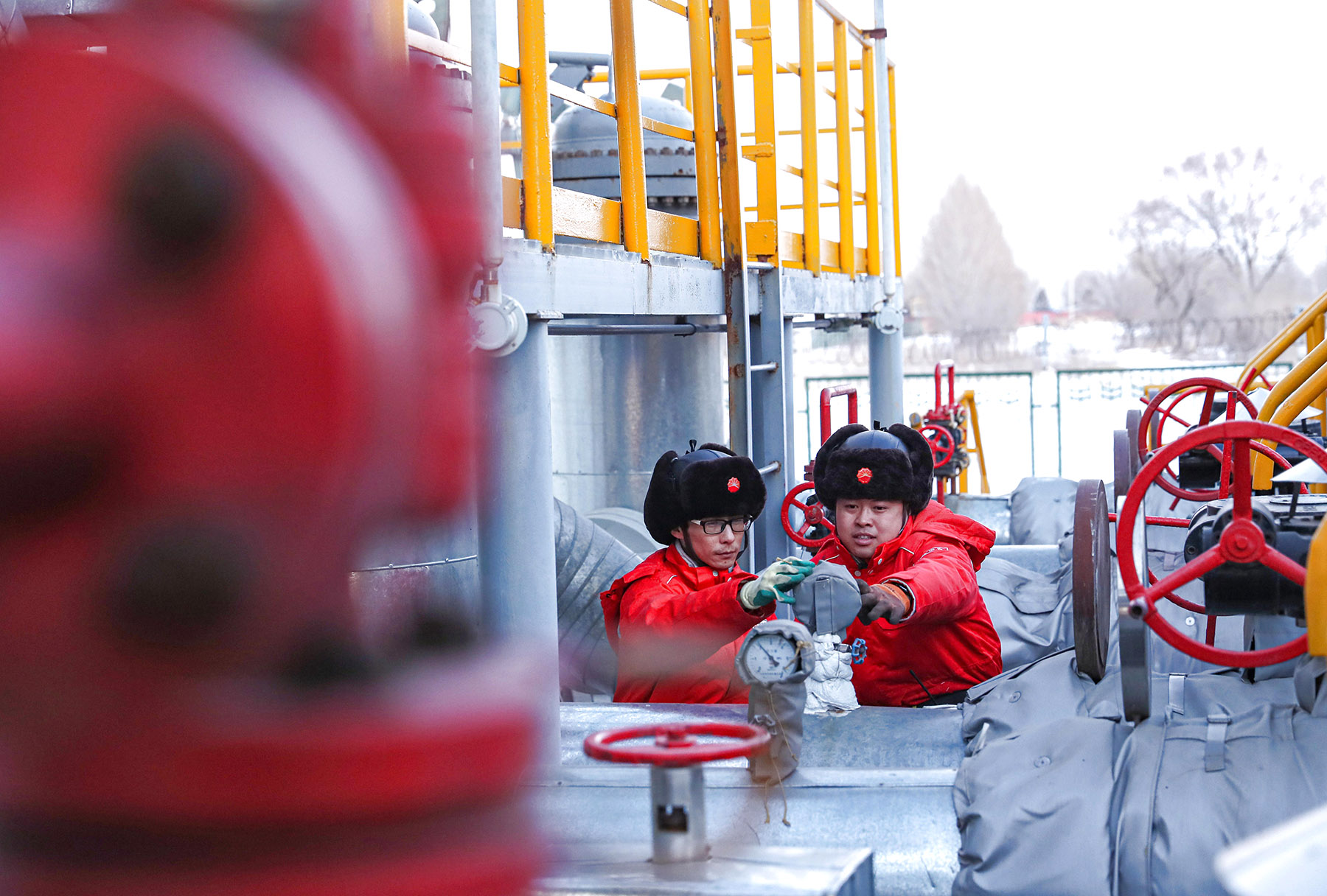
China's total oil and gas production surpassed 400 million metric tons of oil equivalent for the first time in 2024, as the nation vows to meet growing domestic demand for energy even as it reduces reliance on fuel imports, the National Energy Administration said during a news briefing on Thursday.
Crude oil output reached 213 million tons last year, nearing historic peaks, while natural gas production rose to 246.4 billion cubic meters, marking the eighth consecutive year of an annual increase exceeding 10 billion cubic meters.
China accelerated efforts to ramp up oil and gas exploration and development throughout last year, driven by technological innovation and a focus on low-carbon transformation, said Hu Jianwu, deputy director of the administration's oil and gas department, during the briefing.
READ MORE: Marine economy lifting energy reserves, trade
The industrial-scale application of carbon capture, utilization and storage in oilfields was also further developed, injecting approximately 3 million tons of carbon dioxide and boosting crude oil production by over 600,000 tons during the year, he said.
China's push to boost domestic oil and gas production is a strategic move to reduce dependence on imports and strengthen energy security amid volatile global energy markets and geopolitical uncertainties.
According to data from the General Administration of Customs, China's crude oil imports fell 1.9 percent in 2024. Imports totaled 553.4 million tons, equivalent to 11.04 million barrels per day (bpd), compared with 2023's record of 11.28 million bpd.
According to an analyst, China's demand for major transportation fuels showed minimal growth in 2024, as the rapid shift toward electric vehicles reduced gasoline consumption.
The 1.9 percent year-on-year decline in China's crude oil imports in 2024 was driven by weaker domestic gasoline and diesel demand as the nation imports crude oil mainly to process into transport fuels and chemical feed-stocks to meet domestic needs, said Ye Lin, vice-president of commodity markets research at global consultancy Rystad Energy.
Gasoline demand started to fall in 2024 with the improved performance and longer mileage of electric cars finally winning wide acceptance from customers with policy support in the initial years of development, she said.
"Demand for diesel, with the continuous transformation of China's economic growth model, has flattened and peaked in recent years, while the accelerated penetration of LNG trucks posted extra pressure on diesel demand from 2023 and contributed to diesel demand falls in 2024," Ye said.
China's refinery runs fell by 3.3 percent year-on-year, according to National Bureau of Statistics data, pressured by the shrinking domestic gasoline and diesel market and consequently weak refining margins.
Data released by the China National Petroleum Corp Economics and Technology Research Institute show that China's reliance on oil imports is projected to remain at around 70 percent between 2026 and 2030 as it keeps enhancing domestic oil and gas exploration.
The world's second-largest refining industry is estimated to import 559 million tons of crude oil this year, a level equivalent to about 11.18 million bpd, said the think tank.
ALSO READ: Great strides in energy landscape
According to Hu, the development of offshore and unconventional oil and gas resources, such as shale oil and gas, also accelerated throughout last year.
Offshore oil and gas production exceeded 85 million tons of oil equivalent, a fresh record high, while shale oil production surpassed 6 million tons, a year-on-year increase of over 30 percent, and shale gas production exceeded 25 billion cubic meters, maintaining steady growth, said Hu.
The integration of oil and gas exploration with renewable energy development also advanced, enhancing the supply of oil, gas, and comprehensive energy resources, he said.
In 2025, the NEA plans to further increase investment, while expanding operations and advancing key projects, to continuously stabilize crude oil production above 200 million tons and sustain the growth momentum of natural gas output, ensuring national energy security and supply stability.


